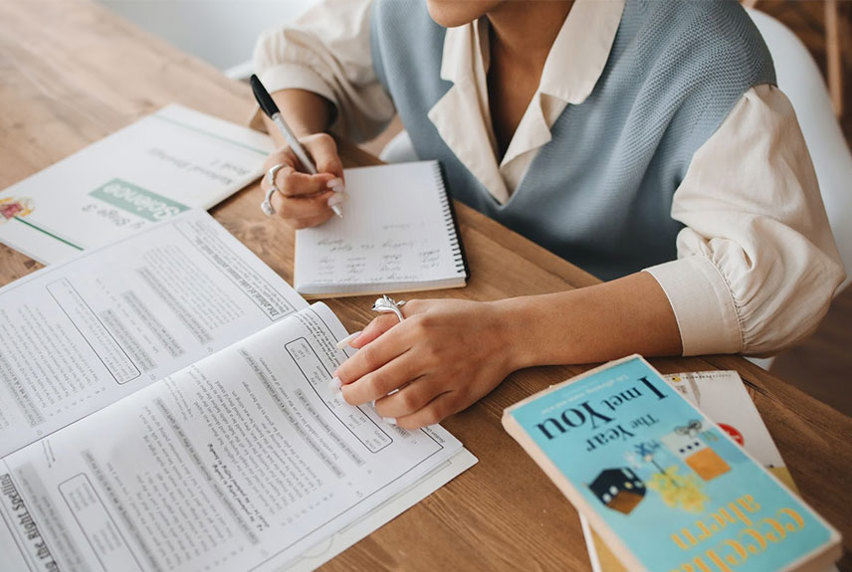Top Ways To Discover Your Best Learning Style

As a student, you're on a journey of self-discovery and growth. One essential aspect of academic success is understanding your own learning style. By identifying the strategies that work best for you, you can optimise your study sessions, retain information more effectively and excel in your vocational training.
In this blog post, we will explore the top 5 ways to find your learning style, which can empower you to tailor your educational experience to suit your unique needs.
What are the different learning styles?
Before we delve into finding your ideal learning style, familiarise yourself with the different types of learning styles. Scholars have identified four primary learning styles, each representing a distinctive way in which individuals process and retain information.
These styles are:
Visual learners: seeing is believing
Visual learners grasp concepts more effectively through visual aids such as graphs, diagrams, and charts. They benefit from watching videos, looking at images, and using colour-coded notes to enhance their understanding.
Auditory learners: listening for success
Auditory learners thrive when information is presented through sound and verbal communication. They prefer listening to lectures, participating in group discussions, and explaining concepts aloud. Reciting information and using mnemonic devices are particularly helpful for this learning style.
Kinaesthetic learners: learning by doing
Kinaesthetic learners learn best through physical experiences and hands-on activities. They prefer practical applications, role-playing, and interactive exercises. These learners benefit greatly from incorporating movement and tactile elements into their learning process.
Reading/writing learners: the power of words
Reading/writing learners excel in traditional learning environments, where they engage with written materials. They enjoy reading textbooks, taking notes, and summarising information in their own words. Writing essays, creating outlines, and using flashcards are valuable strategies for this learning style.
Self-assessment: what’s my learning style?
To identify your dominant learning style, it's crucial to engage in self-assessment. Reflect on your previous learning experiences and identify patterns or preferences in how you absorb and process information.
Ask yourself which of these indicative characteristics apply to you:
- Do you often find yourself drawing or doodling during lectures?
- Are you more inclined to remember information presented through visual aids?
- Do you prefer watching videos or tutorials over reading lengthy texts?
If you answered yes to the above, you are a visual learner.
- Do you enjoy participating in discussions and debates?
- Do you often remember information by repeating it out loud?
- Do you find it easier to grasp concepts when explained verbally?
If you answered yes to the above, you are an auditory learner.
- Do you feel the need to physically engage with study materials?
- Do you enjoy hands-on activities and practical demonstrations?
- Do you find it easier to retain information when you can associate it with a physical action?
If you answered yes to the above, you are a kinaesthetic learner.
- Do you prefer reading and taking detailed notes during lectures?
- Do you excel in written assignments and essay-based assessments?
- Do you find it easier to remember information when you write it down?
If you answered yes to the above, you are a reading/writing learner.
Experiment with different approaches to learning
Now that you have a better understanding of the different learning styles and have identified your dominant style, it's time to experiment with various approaches. Remember, no single learning style is superior; it's about finding what works best for you.
Here are five practical tips to help you explore and embrace your unique learning style.
Try diverse study techniques
Experiment with different study techniques that align with your learning style. For visual learners, create mind maps or use flashcards. Auditory learners can benefit from recording and listening to lectures. Kinaesthetic learners should engage in hands-on activities, such as simulations or practical exercises. Reading/writing learners can summarise information in their own words or create detailed outlines.
Leverage technology
Utilise technology tools that cater to your learning style. Visual learners can explore educational videos and interactive multimedia resources. Auditory learners can listen to educational podcasts or use text-to-speech software. Kinaesthetic learners can try educational apps or online simulations. Reading/writing learners can use digital note-taking tools and online forums for discussions.
Collaborate with peers
Engage in group discussions, study sessions, or peer-to-peer teaching. This interaction allows you to reinforce your learning by discussing ideas and sharing perspectives. Visual learners can create visual aids for presentations, auditory learners can explain concepts to others,
kinaesthetic learners can organise hands-on group activities, and reading/writing learners can facilitate note-taking or summarising sessions.
Adapt learning environments
Modify your learning environment to suit your learning style. Visual learners may benefit from well-organised study spaces with visual cues. Auditory learners can find quiet areas or utilise noise-cancelling headphones. Kinaesthetic learners can create a dynamic workspace that allows movement and physical engagement. Reading/writing learners can ensure easy access to reference materials and writing tools.
Embrace a holistic approach
While identifying your dominant learning style is valuable, embracing a holistic approach to learning can enhance your overall experience. Incorporate elements from other learning styles into your study routine. For example, visual learners can integrate verbal explanations, auditory learners can incorporate visual aids, kinaesthetic learners can supplement hands-on activities with reading, and reading/writing learners can engage in group discussions.
Explore diverse programs at Melbourne Polytechnic
Ready to embark on a learning journey tailored to your unique learning style? Discover a wide range of programs at Melbourne Polytechnic. Our programs are designed to accommodate various learning preferences, ensuring an engaging and effective educational experience. Visit our website to explore the programs that align with your learning style and take the next step towards achieving your educational and career goals.